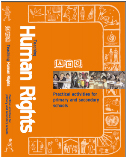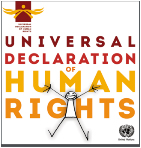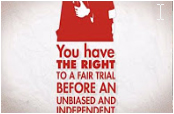

The Commission has developed lesson activity ideas and a film on Equal Choices, Equal Chances appropriate to be used in primary schools, and has also developed lesson-plan-ideas, lesson-videos, assembly-plans, training and other useful-information appropriate to be used in secondary schools.

This tool talks about us as human beings. It talks about the process of teaching and learning the significance of the inherent “dignity and worth of the human person” which is the “foundation of freedom, justice and peace in the world” (Universal Declaration of Human Rights, preamble). It also discusses the rights that belong to us all. These are not just lessons for the classroom but lessons for life – of immediate relevance to our daily life and experience. In this sense, human rights education means not only teaching and learning about human rights, but also for human rights: its fundamental role is to empower individuals to defend their own rights and those of others. This empowerment constitutes an important investment for the future, aimed at achieving a just society in which all human rights of all persons are valued and respected.

These classroom activities are based upon activities designed by Equitas – International Centre for Human Rights Education for the Play it Fair! and Speaking Rights programmess. They were collaboratively adapted – including terminology – for use by the Canadian Museum for Human Rights and seek to promote human rights, non-discrimination and peaceful conflict resolution through active participation and capacity-building.

AI USA has developed film-curriculum-guides, teaching-guides, and lesson-plans. The lesson plans are carefully crafted by education professionals and represent the teaching perspectives of the authors and the Human Rights Education division of Amnesty International USA.

The Australian Human Rights Commission aims to give people the knowledge and skills they need to understand their rights and to bring about positive change in their lives and in their communities. They have created educational resources for use in schools (both by teachers and students), the Australian Public Service, the Vocational Education and Training Sector, and for businesses. In addition they have developedv fact sheets providing essential information resource on the development of human rights law.

The Universal Declaration of Human Rights (UDHR) is a milestone document in the history of human rights. Drafted by representatives with different legal and cultural backgrounds from all regions of the world, the Declaration was proclaimed by the United Nations General Assembly in Paris on 10 December 1948 General Assembly resolution 217(III) as a common standard of achievements for all peoples and all nations. It sets out, for the first time, fundamental human rights to be universally protected. An illustrated version of the Declaration), a simplified version of the Declaration, and numerous videos have also been produced.

Numerous videos have been produced detailing the origins and timelines related to human rights.

Short but informative videos have been created detailing human rights protections in England.

The Court has produced a video presenting the main rights and freedoms in the Convention. Aimed at a wide range of viewers, this video-clip is currently available in 38 languages. The Court wishes to encourage initiatives aimed at including this video-clip in civic education programmess.

Written by experts in the field, each handbook deals with one aspect of the European Convention on Human Rights or its protocols. The handbooks are intended as a very practical guide to how particular articles of the European Convention on Human Rights have been applied and interpreted by the European Court of Human Rights in Strasbourg. They were written with legal practitioners, and particularly judges, in mind, but are accessible also to other interested readers. The Council has also produced numerous other publications on human rights.